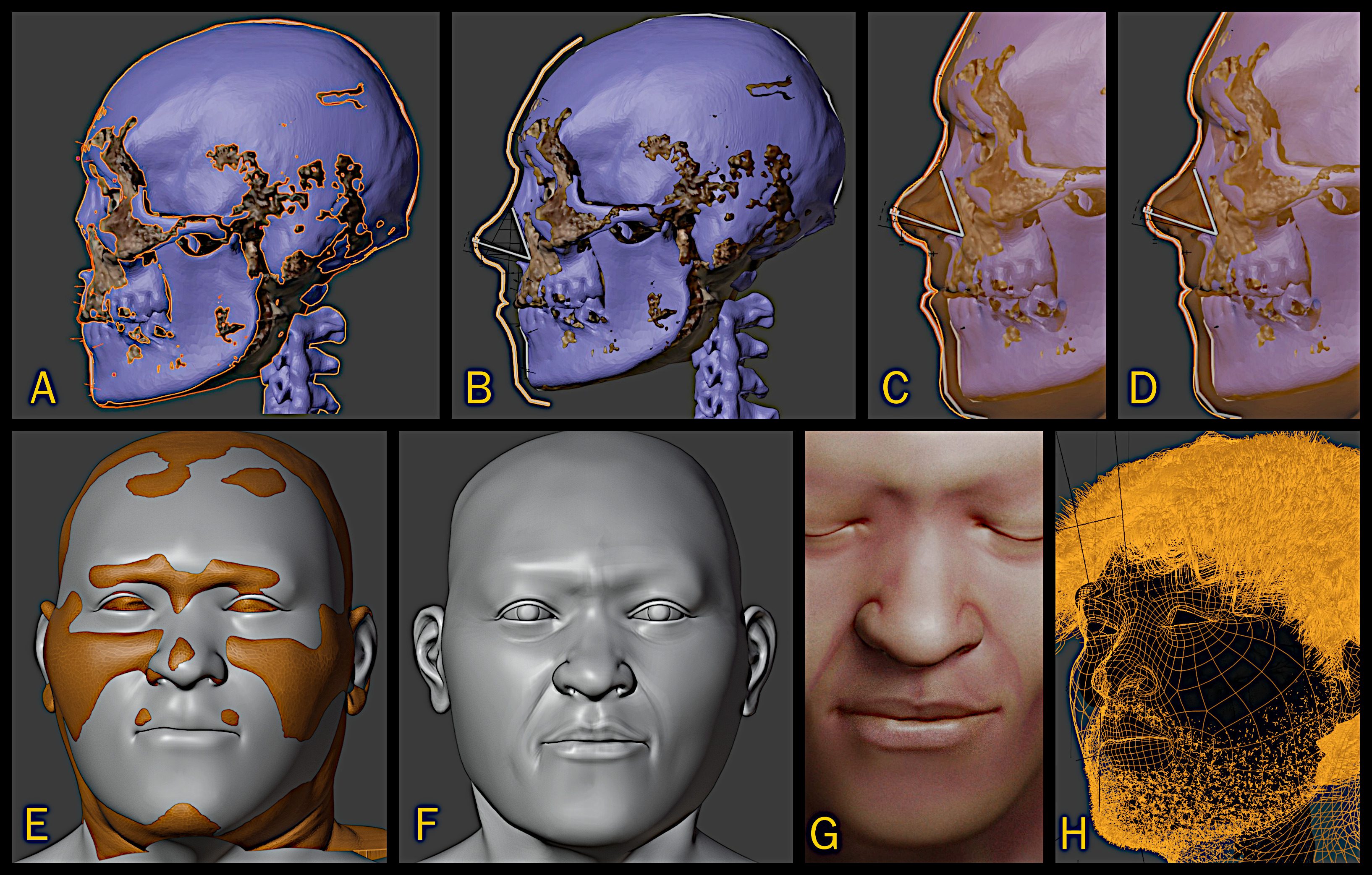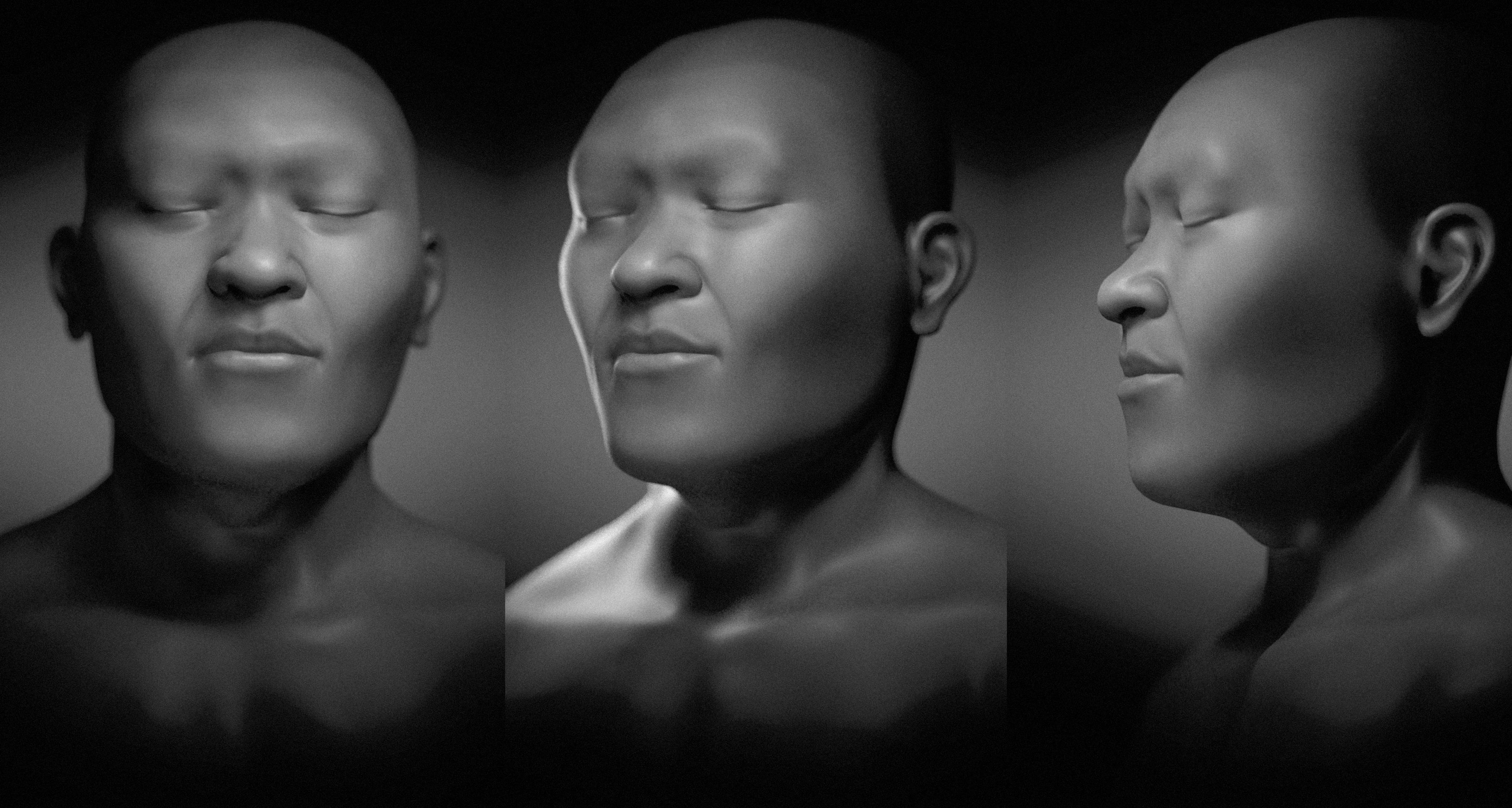Gaze at the face of a human who lived in Egypt thousands of years before the pyramids first stood. A recent project has created facial reconstructions from the 30,000-year-old remains of a human discovered in the Nile Valley, providing a deeply personal snapshot of prehistoric Egypt.
The facial reconstructions were crafted by archaeologists Moacir Elias Santos and 3D designer Cícero Moraes, both based in Brazil. The pair based their work on an almost complete skeleton that was found at the prehistoric Egyptian site of Nazlet Khater 2 back in 1980.
The skeleton belonged to a young male, perhaps in his late teens or twenties, of African ancestry who stood at around 165 centimeters (5 foot 4 inches) tall.
Early attempts to put a date on the skeleton fell flat because of the highly fragmented bone quality and the relatively basic level of radiocarbon dating technology available in the early 1980s. Fortunately, a stone axe was found alongside the body, which was dated somewhere between 35,000 and 30,000 years old.
The paper notes that the skull can be considered “modern”, suggesting this guy had the potential to have similar cognitive abilities to humans of the present day. However, they note that the remains do feature some “archaic” characteristics, most notably a larger jaw compared to modern-day Homo sapiens.
After capturing the shape of the skull through photogrammetry imaging, the missing parts of the remains were then pieced together using an array of scientific techniques. Once a complete skull approximation was put together, they then had to work out where and how the soft tissue would sit on their skull.

The act of facial reconstruction using just a skull is not an exact science, so some artistic license is needed. This is because the shape of the skull can only provide limited insights into how soft tissue, such as muscle, and fat, would actually appear on a person’s face.
As such, the duo created two final images: “one more objective and scientific and the other more subjective and artistic.” While the “scientific” image is more of a rough bust, the “artistic” example features hair, a light beard, and expressive eyes.
“Although it contains speculative elements about the individual’s appearance, as it is a work that will be presented to the general public, it provides the necessary elements for a complete humanization, very difficult to achieve only with exposure of the skull and deficient in the objective image in grayscale with eyes closed,” the researchers write in their paper.

This man would have lived a hunter-gatherer lifestyle, armed only with stone tools and his brain. It wasn’t until 6000 BCE, around 25,000 years after this guy lived, that permanent settlements started to appear all over Egypt.
This, of course, was the location that gave birth to one of the most impressive of all ancient civilizations, known for its highly complex culture and architectural feats. How Ancient Egypt came to be so advanced is often portrayed as a deep mystery, but researchers have recently started to gain a clearer idea (no, it wasn’t aliens).
The study is published in OrtogOnline.
Source Link: Long Before Pyramids, This Is What The People Of Egypt Looked Like